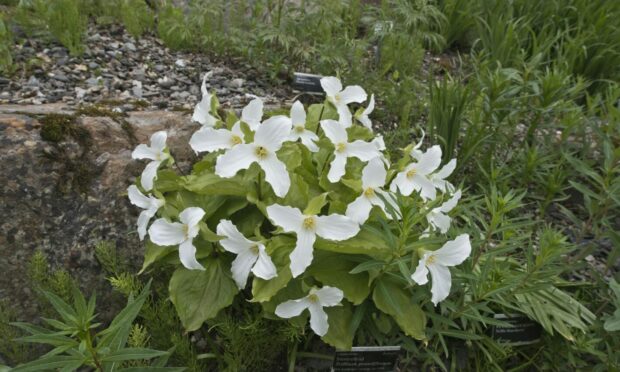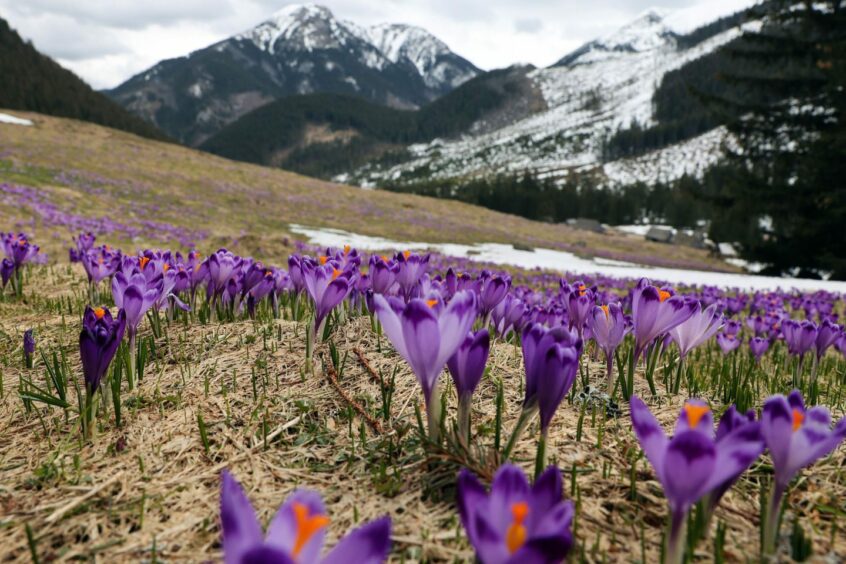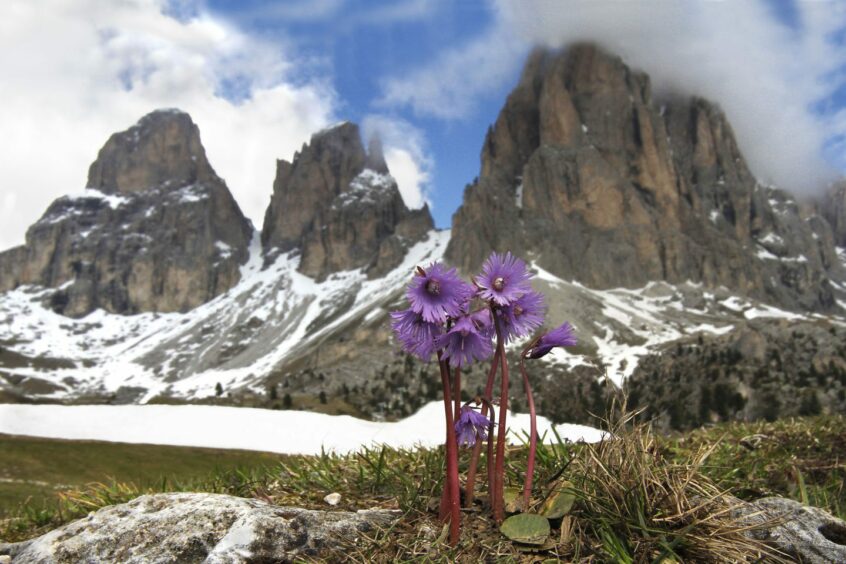From spells working in botanical gardens both in Edinburgh and St Andrews, I’ve spent a fair chunk of my career working in alpine gardens, and I loved them.
Other names we may be familiar with for this style of gardening are rock gardens or rockeries.
For generations gardeners have mounded soil and strategically placed rocks to replicate alpine scenery and grow a collection of mountain plants.
A different style
I’ve never quite fully worked out what attracts me to them so much. I’ve always enjoyed mountain scenery and I guess it felt a completely different style of gardening than I was used to during my time working in these giant replicas.
It was such great fun on a daily basis scrambling up and balancing on rocks to carry out some weeding or examine a miniature plant more closely.
I’ve always enjoyed all aspects of horticulture wanting to know as much about fruit, veg, dahlias, trees propagation and the like, which is why today my interest in alpines is more of a hobby than professional.
At home my own alpine garden is a more modest-sized version, being two squared metres rather than two acres!
I still find alpine plants fascinating. On the tops of the mountains plants like Saxifrage, need to grow low, clinging to the rocks for survival.
They’ve no chance of growing any taller than a few centimetres up there, as they’ll just get blown over by the strength of the hurricane force winds!
Alpine plant life
There’s no soil up there either, seed settles in cracks and crevices, receiving the nutrients they need from the rock minerals and moisture from the rains or melting snow, to send down roots into these tiniest of spaces.
The cold, freezing temperatures followed by the thawing, warming conditions makes weaker rocks crumble and erode, with the subsequent debris tumbling down the mountain and gathering at the bottom to create scree conditions of loose rubble. Perfect for plants to colonise.
Coming further down the mountain, more familiar soil-like conditions are found in the alpine grassland.
Still covered in thick layers of snow for many months of the year, this acts as an insulating blanket for the many plants that grow here.
As the snow slowly retreats, Crocus, Pulsatilla and Soldanella colourfully emerge from the ground, creating stunning displays in inhospitable places.
Rockery evolution
There was a time our rockeries at home consisted of a lump of soil with large stones spaced around them, creating what resembled a currant bun.
Today, thanks to the knowledge, imagination and growing skills of the rock garden specialist both professional and amateur, we can create far more exciting alpine gardens at home which, once made, require very little of our attention and give us interest all year round.
As mentioned earlier, these plants mostly grow in gravel conditions so we need our growing medium when gardening down closer to sea level, to be free draining.
If we were making a soil mix from scratch then we are aiming for it to be a half and half, soil and gravel mix.
When making alpine gardens in the traditional method of old stone troughs or in the stylish methods today of old tin baths, use a soil-based compost such as John Innes number 3, mixed with horticultural grit.
My previous attempts of building alpine gardens would then have meant fitting as large a rock or boulder that I could handle, to make dramatic rock faces with little pockets and terraces, then taking advantage of the gaps in between the joins of rock for plants to grow.
That’s what I still have, then it merges with a modern crevice feature where I’ve used slate of various thickness that I found buried at the bottom of my garden, stood on their ends to try and replica the natural mountain conditions.
Defying all logic
After reading an article in the journal of the Scottish Rock Garden Club, which I’d thoroughly recommend membership of for anyone looking to take their interest to the next level, the material I use for growing in plants is actually sharp sand. There is no soil here whatsoever.
This is when my mind gets blown away by what seems to be defying all common logic, but certain plants survive perfectly well.
These include a wee bearded Iris called ‘Knick Knack, a miniature Allium bulb, Cyclamen hederifolium and the best of all the glaucous coloured leaves of Oxalis, with funnel-shaped flowers that open during the day when the sun is out before closing up at night.
When I think about all the gardens that are gravelled over these days, I can’t help but think just how much brighter they would look with a few alpines planted in them.
It would also see a much needed increase in an early year food source for our pollinating insects that we just seem to be taking for granted when we mono-block our gardens for cars or lay artificial grass.
With the gravel suppressing weeds it’s a great low-maintenance garden too. One day I’ll convince them…





Conversation